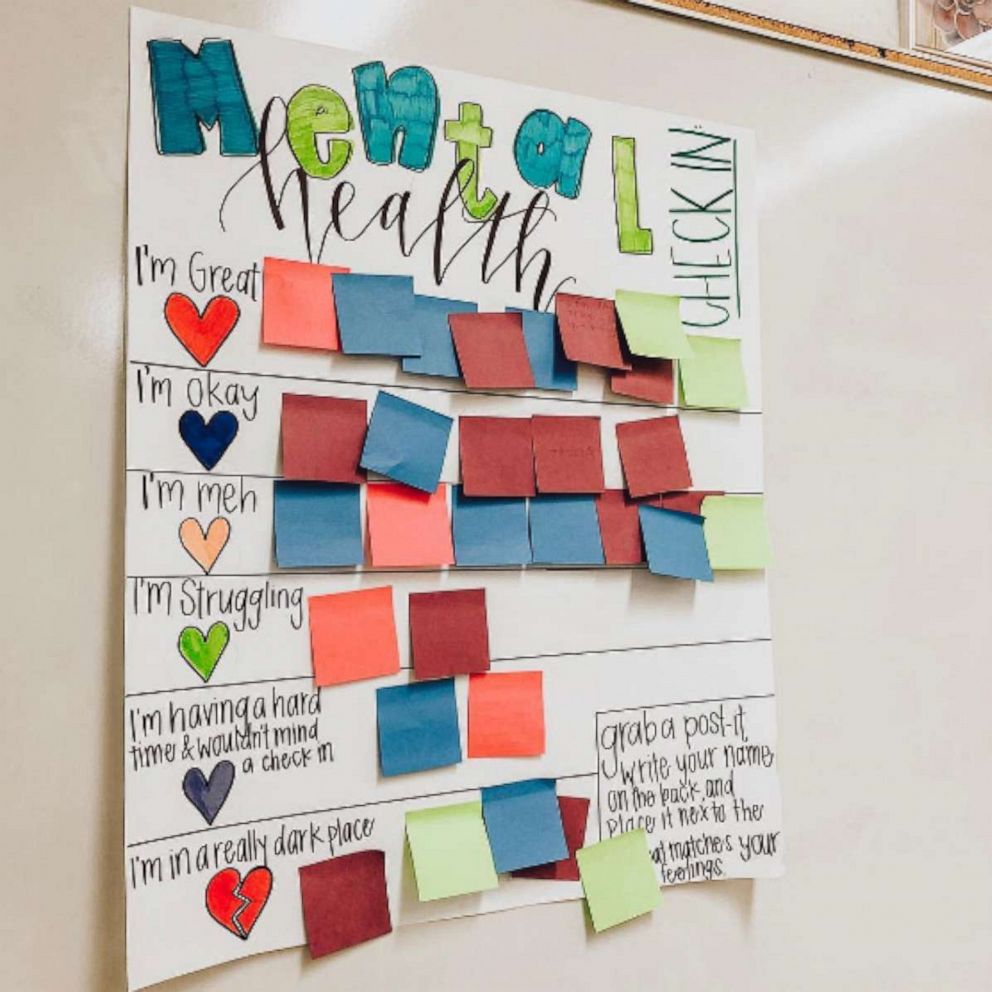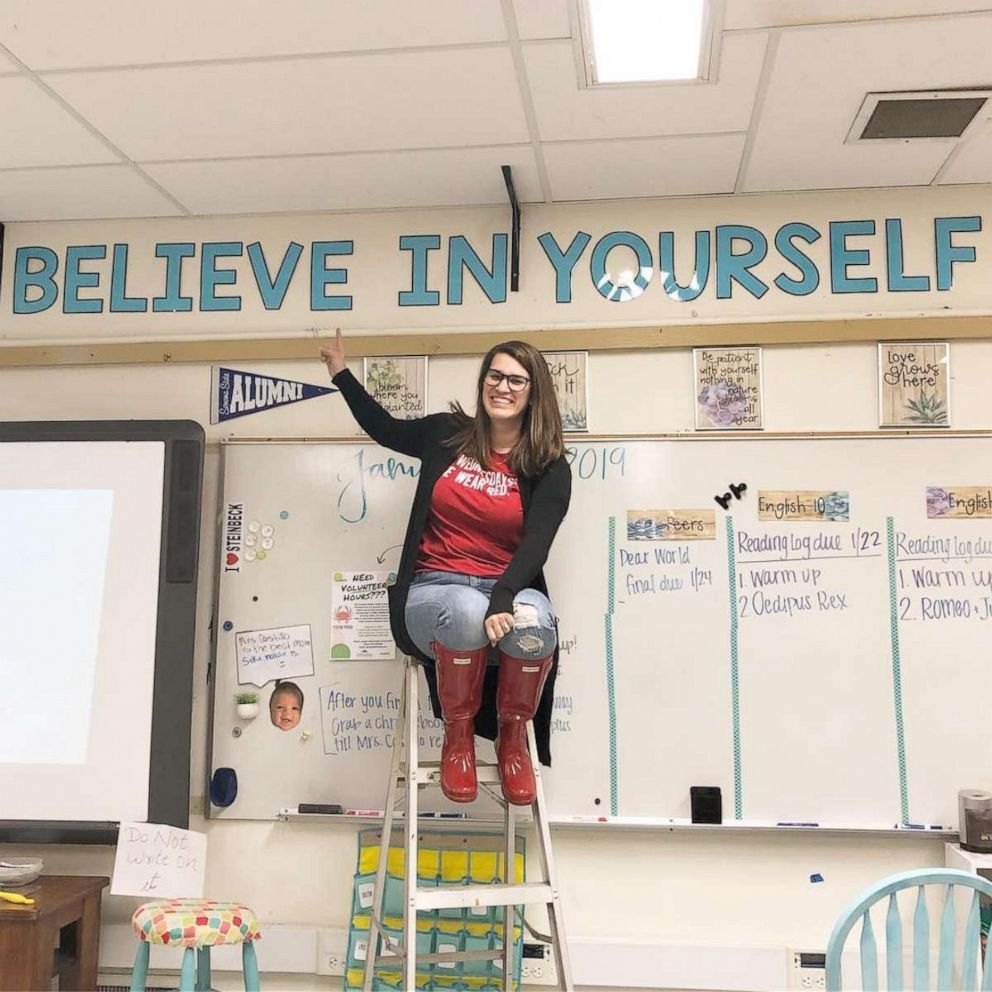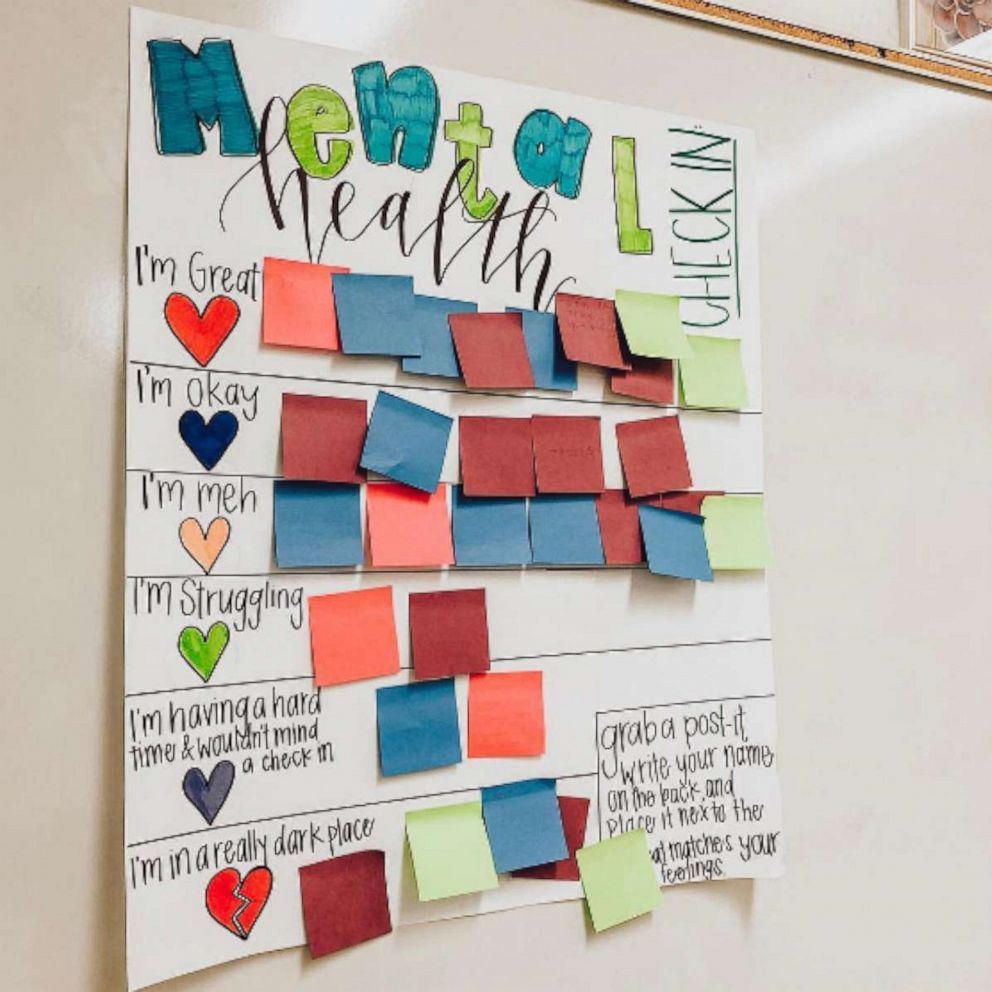Teacher uses affirmation station, check-in chart to help students’ mental health
When students return to Erin Castillo's classroom Wednesday, their first day of in-person school in over a year, the high school teacher will be paying attention to more than just how they are doing academically.
Castillo, an English and peer counseling teacher at John F. Kennedy High School in Fremont, California, said she will be focusing more attention than ever this year to her students' mental health.
"I think there's a big emphasis [among educators and parents] on learning loss and the academic side, but I don't think any kids are concerned about that," Castillo told "Good Morning America." "The kids that I've talked to, what they're concerned about, and what I'm concerned about, is the social side of things ... their health [amid the coronavirus pandemic] ... and just the discomfort of going back to school."
Castillo went viral two years ago when she shared on Instagram a mental health check-in chart that she uses with students.
Castillo said she created the chart after realizing so many of her high school students were silently struggling.

Her post inspired teachers around the world to make their own versions of the chart for their classrooms. The chart is hanging in Castillo's own classroom still today as students return.
When using the check-in chart, students are encouraged to grab a post-it, write their name on the back and place it next to the statement that best matches their feelings for the day. The options are, "I'm great," "I'm okay," "I'm meh," "I'm struggling," "I'm having a hard time and wouldn't mind a check-in" or "I'm in a really dark place."
The last two statements merit a check-in with Castillo and a follow-up conversation with the counselor or the school psychologist on campus.
"When I created the chart, I wanted mental health to become part of the school conversation and to be tied into how we do things," Castillo said. "Students can't learn nearly as well when they're struggling with something."
Students across the United States are entering school this year amid not only their own anxiety and uncertainty but also uncertainty on a national scale amid rising numbers of COVID-19 cases, including among children, and angry debates among adults on whether students should wear masks.
Some school districts have recognized the mental health challenges facing students and have added resources for the new school year. In Castillo's district, more mental health counselors have been deployed to schools and each school now has a designated mental health lead who receives additional mental health training to take back to their school's teachers and staff.
"I'm sad that this is the way it finally came up but we're seeing that shift now of, okay, we really do need to have these [mental health] conversations and we really do need to talk about coping strategies in the classroom," said Castillo. "I'm definitely seeing it more."
In addition to the mental health check-in chart in her classroom, Castillo has also created an "affirmation station" for students to recognize each others' good works.
Each student in Castillo's classroom has an envelope posted on a board in the "affirmation station." When students recognize things another student is doing well, they can grab a notecard, write them an affirmation and stick it in their envelope, according to Castillo. Students keep them in their binders. They’ve told me they hang them up in their rooms.
Other mental health tools Castillo said she plans to use this year include giving students mental health-focused prompts to focus on each week, making use of the mini-shredder in her classroom for students to shred negative thoughts and encouraging students to set and reach small, attainable goals focused on self-care and self-love.
And while remote learning was difficult for students and teachers alike, one thing Castillo will miss is being able to use the chat and breakout room functions on Zoom that allowed her to communicate with students one-on-one.
She said her goal is to find ways to help incorporate that anonymity and directness in her in-person classroom.
"I saw a huge uptick in kids asking questions that they wouldn't normally have asked because they may not have been comfortable," said Castillo. "Whatever gives students the voice to communicate that they need help or support, I'm all for it."

Another lesson Castillo said she learned from remote learning is that teachers themselves can set the best mental health example for students.
"We can't be telling kids, 'Take time to breathe and take time to focus on yourself, and it's okay, if you need to ask for help,' if we're not doing any of that ourselves," she said. "I think the more that we take care of ourselves and the more that we're showing students that we're doing that the smoother this school year is going to go."
Castillo and a fellow teacher, Molly Jackson-Schultz, created a free, month-long mental health challenge for teachers to help prepare them for the year ahead.
"It’s a challenge specifically for teachers about focusing on themselves so we can better serve our students," said Castillo, who noted that the challenge can be done any month. "As teachers, we have a hard time like putting ourselves first, but that's the way we survive."
If you are struggling with mental health or know someone in crisis, call the National Suicide Prevention Lifeline at 1-800-273-TALK (8255) or contact the Crisis Text Line by texting HOME to 741741. You can reach Trans Lifeline at 877-565-8860 (U.S.) or 877-330-6366 (Canada) and The Trevor Project at 866-488-7386.






